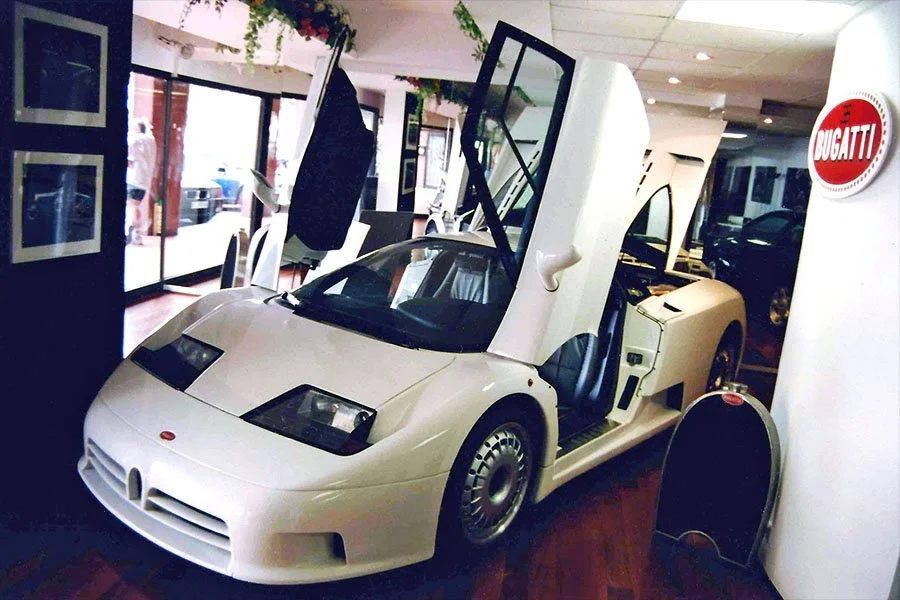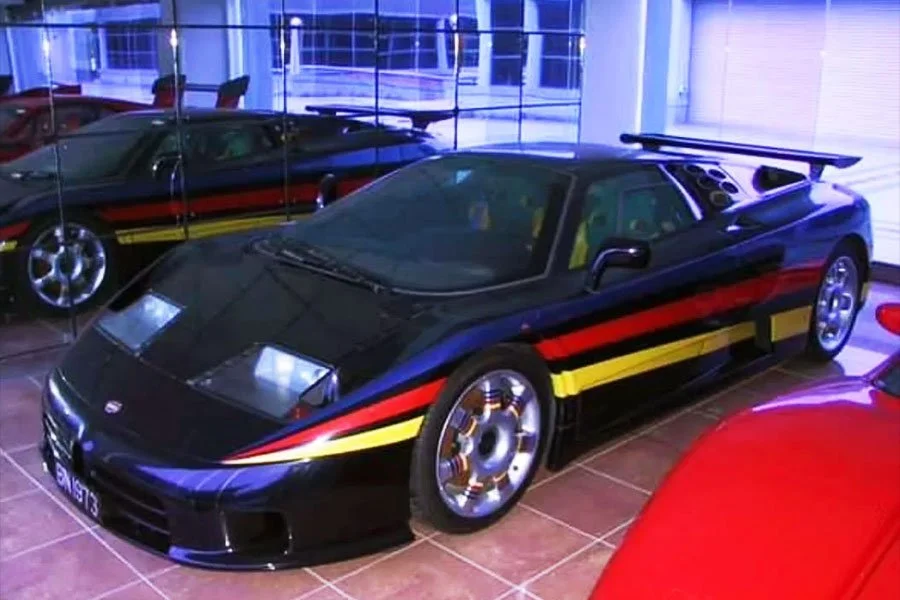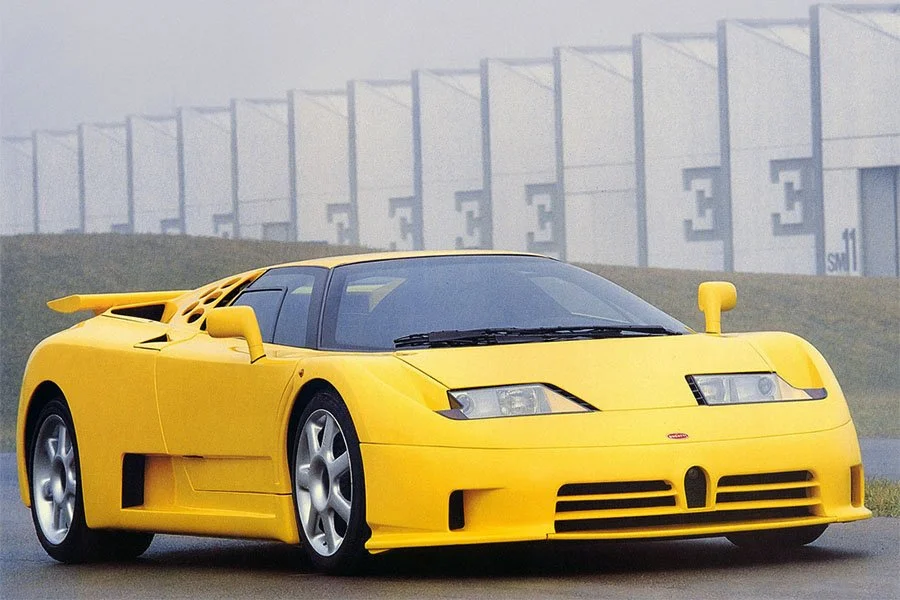Guide: Bugatti 16.4 Veyron Grand Sport Bernar Venet Art Car
/BACKGROUND
Perhaps more so than any other vehicle manufacturer, the Bugatti brand was rooted in the world of art and design.
In addition to the automobiles of Ettore and his son Jean, the Bugatti family became renowned for the furniture, architecture and paintings of Ettore’s father, Carlo, and the animal sculptures by his brother, Rembrandt.
With this in mind, it was perhaps a surprise that the revived Bugatti firm did not use the Veyron platform to create a rolling sculpture until 2011.
The first effort, a collaboration with the Berlin Royal Porcelain Factory, yielded the stunning Grand Sport L’Or Blanc. This was followed in 2012 by a partnership with the French conceptual artist, Bernar Venet.
BUGATTI 16.4 VEYRON GRAND SPORT
Like the L’Or Blanc, Venet’s creation was based on the Veyron Grand Sport which had been introduced three years after the fixed-head variant went into production. Bugatti launched the targa-topped Grand Sport at the Pebble Beach Concours d’Elegance in August 2008 and deliveries began in June 2009.
For reasons of safety, the Grand Sport came with a significantly modified monocoque. Most notably, load paths were redesigned and reinforcements were added around the sills, central tunnel, doors, windscreen and the engine intake scoops behind the cockpit.
Aside from a 2mm lower ride height and re-rated dampers, the rest of the mechanical specification was more or less unchanged.
The Veyron’s all-alloy W16 engine featured dry-sump lubrication, dual overhead camshafts, four valves per cylinder and four MP-Engineering MP70 turbochargers. It displaced 7993cc thanks to an 86mm bore and stroke.
With a compression ratio of 9.0:1, peak output was 987bhp at 6000rpm and 922lb-ft at 2200-5500rpm.
Transmission was through a Ricardo seven-speed dual-clutch gearbox and electronically-controlled permanent four-wheel drive system.
The Grand Sport came with a transparent roof that had to be manually fitted and removed. A temporary canvas roof that could be carried in the car was also supplied.
With the fixed roof in place, top speed was an unaffected 253mph.
With the roof off, this dropped to 224mph. If the temporary canvas roof was attached, Bugatti recommended a maximum of 80mph.
0-62mph took 2.7 seconds.
BERNAR VENET
Bernar Venet is today best known for his curved, mathematically precise metal sculptures.
He was born in Chateau-Arnoux-Saint-Auban on April 20th 1941. During his formative years, Venet excelled at drawing and painting. As a result of his obvious talent, in 1958 he went to study at Nice’s municipal art school, La Villa Thiole. A year later, Venet took up work as a stage designer at the Nice City Opera.
In 1961, Venet joined the French Army. During this period, he began to establish his own artistic style, most notably working with unusual materials such as coal, ashphalt and tar to develop black monochromatic paintings.
After completing his military service, Venet worked with Minimalist and Conceptualist disciplines. In 1964 he got a big break when he participated in the Salon Comparaisons at the Museum of Modern Art in Paris. A year later his work was exhibited at the IVth Paris Biennial.
Between 1971 and 1976, Venet entered a period of theoretical retrospection and did not create any new work. He taught Art and Art Theory at the Paris-Sorbonne University and frequently lectured around Europe.
Venet returned to work as an artist from 1976. He continued to develop his paintings and sculptures along logical lines and was frequently exhibited throughout Europe and the USA.
From 1984, Venet began to create his sculptures at Atelier Marioni, a foundry in the Vosges region of France.
In 1989 he was awarded the Grand Prix des Arts de la Ville de Paris and, in 1994, Jacques Chirac (then the Mayor of Paris), invited Venet to present twelve sculptures from his Indeterminate Line series on the Champ de Mars. The exhibition kicked off a world tour of Venet's sculptures and he went on to establish himself as one of the most internationally renowned sculptors of modern times.
BERNAR VENET’S VEYRON GRAND SPORT
Bernar Venet was commissioned by Bugatti to create a one-off Grand Sport using his iconic Saturations line during the summer of 2012.
The finished piece was unveiled at the Rubell Family Collection at Art Basel Miami Beach in December 2012. It was inspired by Venet’s passion for mathematical formulas and scientific theories.
Rust coloured technical equations used to calculate the power of the Veyron’s engine were stencilled on to the front fenders and down the flanks of the Grand Sport’s otherwise dark brown body. The front wheels were a mix of rust inlays with diamond cut faces. Those at the rear used body coloured dark brown inlays with diamond cut faces. Black grilles were used throughout.
Inside, rust coloured formulas were embroidered into the door inserts of the haute-couture-style cabin. Upholstery was a mix of dark brown and dark tan leather. Between the seats was an image of Venet’s 1990 scuplture Undetermined Line. A similar graphic was reproduced on the fuel filler cap.
Text copyright: Supercar Nostalgia
Photo copyright: Bugatti - https://www.bugatti.com






































